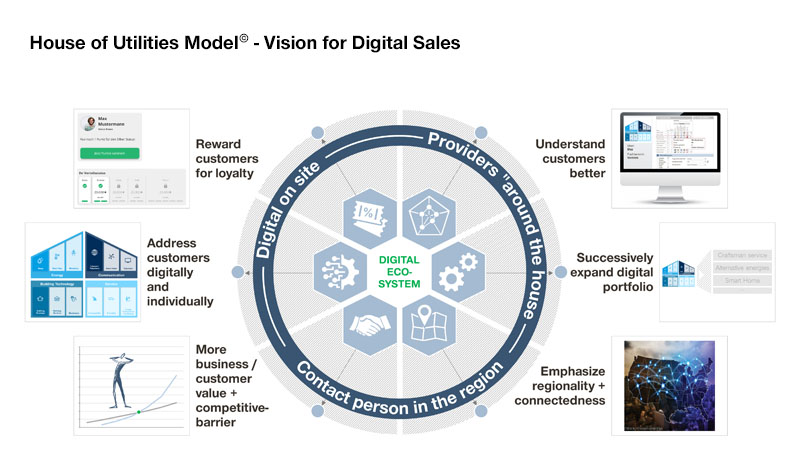Utilities providers are facing numerous challenges in today’s world. Experts Philip Daus, Nare Janvelyan, and Jani Wijnands introduce our innovative digital tool helping utilities providers meet customer satisfaction, overcome challenges, and unlock growth.
Utilities providers are being confronted with a serious challenge. High prices and limited supply have plunged the US into the worst energy crisis since the 1970s. Slow supply recovery post-COVID, impacts of extreme weather, and the Russo-Ukrainian conflict are all driving up prices. This puts customer satisfaction at risk as utilities providers are forced to pass down increased costs.
While the country shut down to address the pandemic, providers were suddenly faced with a major shift in demand and worker safety. As we pulled out of lockdown, demand had a major swing the other way and presented a new set of issues.
Extreme weather has become a vice-like pressure on utility providers. On the one hand, demand has increased from customers facing extreme temperatures. On the other, America has an aging infrastructure that requires substantial investment to modernize.
To add salt to the wound, it’s never been easier for customers to switch providers. In order to restore customer confidence, providers must increase contact quality and time with customers.
But how can utilities providers overcome all these challenges? The answer lies in digitalization. In this article we discuss how digital transformation can help the utilities sector retain customers and ensure growth.
Digitalization: The solution for utility providers
With digitalization impacting nearly every market, utilities have an opportunity to increase both customer engagement and profitability.
Customers are no longer willing to wade through hours of phone calls to address their usage, bills, scheduling, and technical needs. Contactless operations have quickly become the standard by which customers rate the value of their experience. And this is as true for the utilities sector as it is for all industries.
Moreover, as extreme weather fronts continue to dangerously affect communities, meeting the needs of environmentally conscious customers will become increasingly important. Customers can be empowered to manage their consumption by accessing dashboards that show real-time usage, making adjustments as needed.
Digitalization can also help providers restore customer confidence. This is because they enable providers to deliver real-time information to their customers, ensuring a steady and trusted flow of communication.
Simon-Kucher’s Digital Tool: The House of Utilities Model
To this end, we have developed an integrated solution tailored to utilities. The House of Utilities Model serves as a digital sales and customer engagement tool.
The innovative solution integrates existing online sales routes and uses a customer-friendly view, guiding users to products. It also offers a comprehensive sales view. This view optimizes sales support, generates leads and targeted recommendations, and uses data for optimized campaigns.
Our integrated solution increases customer value by taking advantage of three principles of behavioral economics
The solution works by building on the following established principles of behavioral economics:
- The panini effect: Like in a sticker album, the user’s attention is drawn to “gaps” – missing building blocks in the supply. By igniting the user’s desire to complete “the sticker album”, we increase the number of products per customer
- Gamification: The user is encouraged to continue interacting with the digital tool through an optimized sales route. This route enhances the customer experience and user comfort through game-like elements
- Loyalty offers: Increasing customer loyalty by creating tactical “emergency exits” for valuable but unsatisfied customers
This approach has proven to be successful in other industries. Companies using these tools have experienced:
- An average increase of 10 basis points in profit in relation to total assets
- 12-18 months to increase in product penetration per customer by an average of one product
- Over 100 percent increase in adoption of “smaller” products
- Less than 0.5% customer churn despite parallel price increases

Simon-Kucher’s The House of Utilities can help utilities providers:
- Better understand their customers
- Expand their digital portfolio
- Reward their customers for loyalty
- Address customers digitally and individually
- Increase the competitive barrier
- And, most importantly, drive customer value and growth

